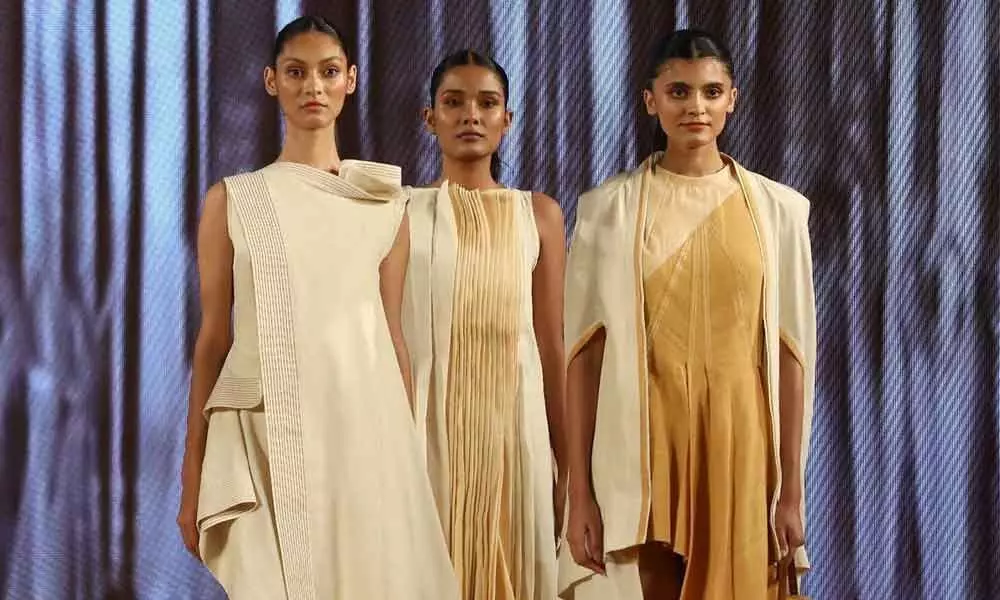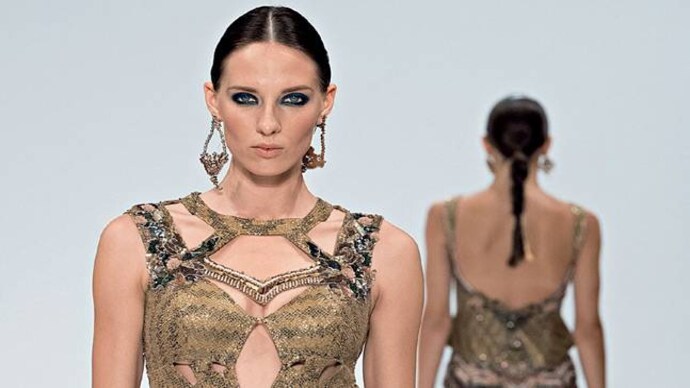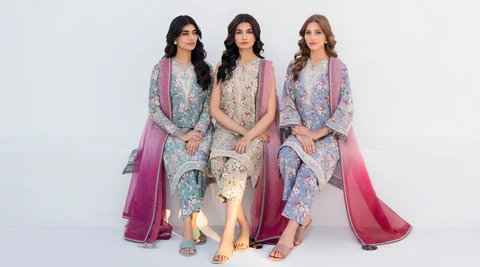Lucknow: In the heartland of India, where ancient looms whisper tales of freedom and resilience, Khadi has transcended its humble beginnings to become a symbol of style, sustainability, and self-reliance. Uttar Pradesh, the cradle of India’s handloom heritage, is at the forefront of this movement, transforming Khadi from a fabric of history into a contemporary fashion revolution. From the bustling streets of Lucknow to the sacred ghats of Varanasi, Khadi’s resurgence in 2025 reflects a broader shift in Indian fashion: one that prizes eco-consciousness, craftsmanship, and cultural pride alongside elegance. Once synonymous with Gandhi’s charkha and the Swadeshi movement, today Khadi is gracing global runways, adorning Bollywood celebrities, and energizing youth-led eco-fashion trends. With sales surging fivefold over the last decade—now exceeding ₹1.5 lakh crore and employing over 1.76 crore people—Khadi is proving that heritage and haute couture can walk hand in hand.
“Khadi has evolved from tradition to trend, defining modern fashion by fusing sustainability and elegance while opening doors for countless craftspeople,” notes a young fashion enthusiast on X. Indeed, Khadi is no longer a relic of the past—it is a powerful statement of contemporary identity.
The buzz around Khadi reached a crescendo with the Khadi Mahotsav in Lucknow early in 2025. The seven-day extravaganza at Indira Gandhi Pratisthan drew thousands, with Chief Minister Yogi Adityanath inaugurating the event and framing it as both a celebration and manifesto. “This event is serving as a platform for all the artists doing local products,” he declared, emphasizing Khadi’s role as a beacon of self-respect and economic empowerment.
Over 133 stalls from five states showcased everything from raw yarns to ready-to-wear creations, but the real spectacle was the fashion show. Designers like Rosy Ahluwalia, Shravan Kumar, Sabyasachi Satapathy, and Aditi Jaggi Rastogi unveiled collections that blended heritage weaves with contemporary aesthetics. Pre-draped sarees in earthy tones, asymmetric kurtas with subtle embroidery, and fusion lehengas combining Khadi’s breathable texture with metallic accents enthralled the audience.
Aditi Jaggi Rastogi, a Lucknow-based designer and recipient of the Resham Ratna Award, stole the evening with her line dyed in natural indigo and adorned with block-printed Awadhi paisleys. IAS officer Ritu Suhas graced the ramp in a fluid Khadi gown, exemplifying Khadi’s ability to bridge tradition and modernity. “This collection is made with natural dyes and prints,” Rastogi explained. “Khadi allows for timeless pieces that feel modern yet rooted.” Suhas herself remarked, “Khadi isn’t just attire; it’s a statement of empowerment and elegance,” a sentiment that resonated widely as her performance went viral on X, inspiring thousands of threads celebrating her poise.
The Mahotsav was not just a visual feast; it underscored Khadi’s economic pull. Urban millennials, increasingly drawn to ethical fashion over fast-fashion cycles, contributed to crores in sales, reflecting a rising demand for clothing that aligns with values as much as style.
This momentum carried into September 2025 at the Uttar Pradesh International Trade Show (UPITS) in Greater Noida. The five-day expo, featuring Russia as the partner country and over 2,500 exhibitors, positioned UP as Asia’s handloom powerhouse. On Day 3, the Khadi fashion show titled “Re-Spin: The Khadi Edit” dazzled over 1,34,000 visitors, including 500 global buyers. Models showcased innovative silhouettes—Khadi denim jackets, crop-top co-ords, and fluid maxi dresses—that seamlessly fused tradition with contemporary trends.

“Khadi’s magic reigned supreme,” said organizers. “It sends a strong message that Khadi has moved from tradition to trend and is now part of the global fashion narrative.” Minister Rakesh Sachan reinforced the point, stating, “Khadi is not just cloth; it is the pride of our nation and a symbol of self-reliance.” Programs like One District One Product (ODOP) and Vishwakarma Shramik Samman were highlighted for empowering rural artisans, turning local clusters into thriving export hubs. Global buyers marveled at Khadi’s eco-credentials—biodegradable, low-water, zero-waste—hailing it as the “Fabric of the Future.”
In Lucknow, the revival is visible on the streets. Markets such as Hazratganj and Aminabad now feature pop-up stalls blending Khadi with chikankari, offering kurtas priced between ₹800-1,500. A survey by the UP Khadi Board revealed that 40% of 18-25-year-olds now prefer Khadi for its sustainability, a sharp rise from 15% in 2020. “The world is waking up to slow fashion, but Khadi knew it first. Sustainability is stitched into every fiber,” tweeted designer Khushi Saini, capturing the Gen Z ethos. Boutiques like Ada Designer Chikan Studio are experimenting with Khadi dungarees and bomber jackets, drawing influencers who promote #KhadiRising online.
Varanasi, the spiritual epicenter, is adding its own layers to the narrative. At the Regional Khadi Exhibition in Chowkaghat, silk-Khadi fusion products logged ₹63 lakh in sales by January 2025. Artisans from Sankat Mochan clusters introduced innovations like Khadi scarves with Banarasi brocade and lightweight stoles for pilgrims. “Khadi meets the eternal—breathable for summer, reverent for rituals,” says weaver Rajendra Yadav. Exhibitions in Varanasi, alongside events like the Gorakhpur Mahotsav, showcase Indo-Western Khadi designs that garner global attention, proving desi attire’s appeal on international stages.
The international momentum is real. At Moscow Fashion Week, KVIC’s Khadi showcase, sourcing fabrics from UP, captivated editors and buyers alike. Designer Samant Chauhan’s all-white Khadi collection, inspired by Dostoevsky, fused Khadi with eri silks, marrying tradition with cosmopolitan elegance. “Working with Khadi feels like a full-circle moment,” said NIFT alumna Zaidi, head of KVIC’s Apparel division. Bollywood endorsements, with Alia Bhatt in Khadi sarees and Ranveer Singh in oversized shirts, amplify the fabric’s modern allure.
Challenges remain. Mechanized production threatens authenticity, and climate change affects cotton yields. Yet, Uttar Pradesh is responding robustly—training 50,000 artisans under ODOP and promoting organic cotton farms in Barabanki. Designers like Rosy Ahluwalia are pushing boundaries, blending Khadi with K-pop aesthetics, demonstrating its global versatility.
In 2025, Khadi is no longer whispering from the looms—it is declaring its presence. It empowers weavers, enriches wardrobes, and represents a blueprint for sustainable glamour. As Chief Minister Adityanath noted, “We should accept good things from wherever we get them,” but Uttar Pradesh is proudly offering the world something uniquely its own: Khadi, reimagined, revitalized, and redefined. Khadi for Nation, Khadi for Fashion, Khadi for Transformation.






